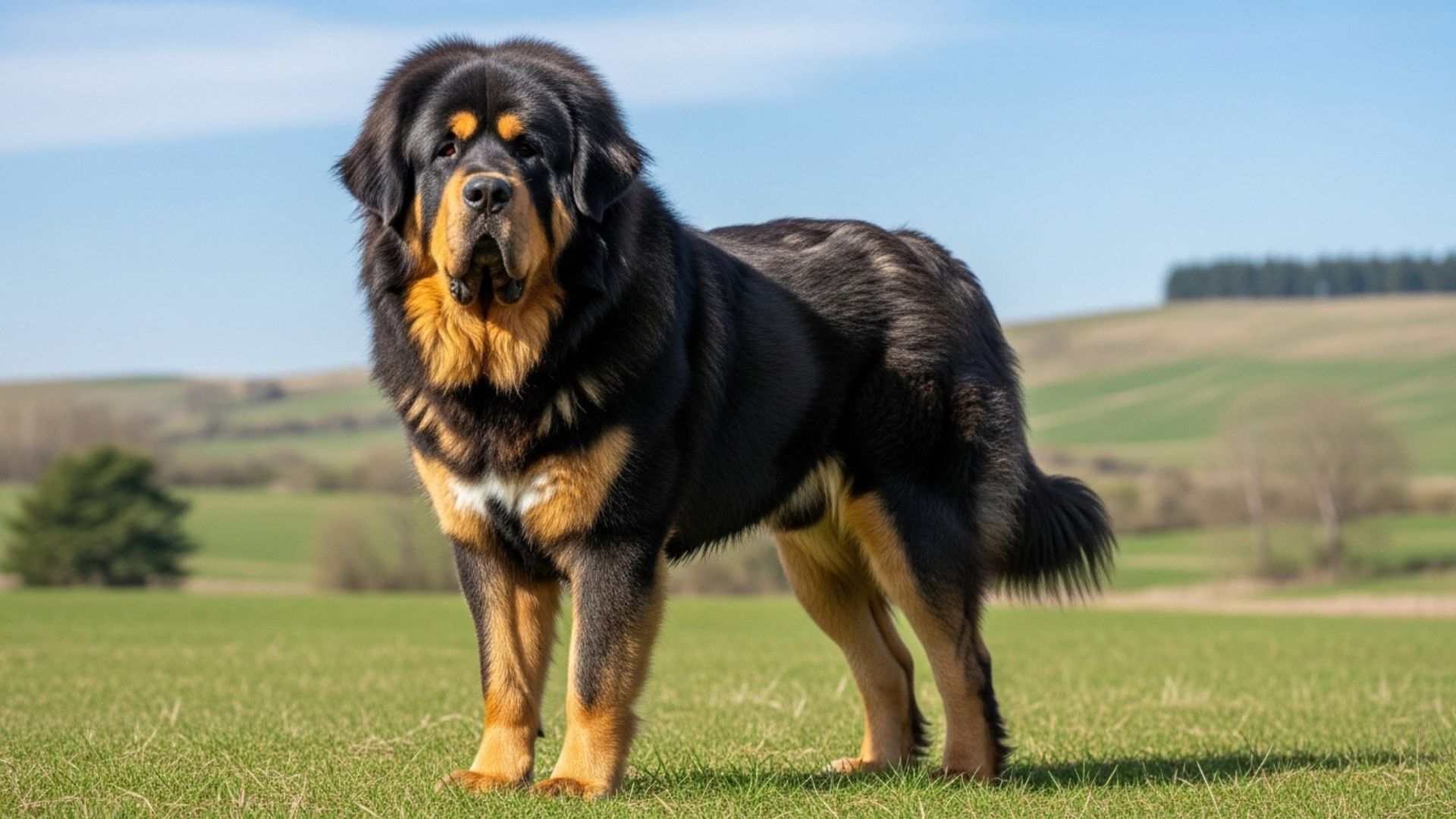Did you know that some giant dog breeds can weigh over 200 pounds? That’s the size of an average adult human, but packed into a furry, muscle-bound frame! These massive dogs aren’t just big; they’re powerful, loyal, and incredibly strong.
If you’re wondering how a dog can become a true giant, the secret lies in their genetics, training, and instincts. The strength behind these breeds is mind-blowing, with some capable of pulling weights greater than their own body size.
From guarding homes to pulling sleds, these largest dogs have been bred for strength and endurance. Their muscular build and imposing presence make them stand out wherever they go.
But don’t let their size fool you—many of these giants are incredibly gentle and affectionate. They are, after all, beloved companions for families all over the world.
Ready to meet the top 7 strongest giant dog breeds? Let’s dive into the world of these mighty canines that will leave you in awe!
Strongest Giant Dog Breeds In The World
1. Mastiff
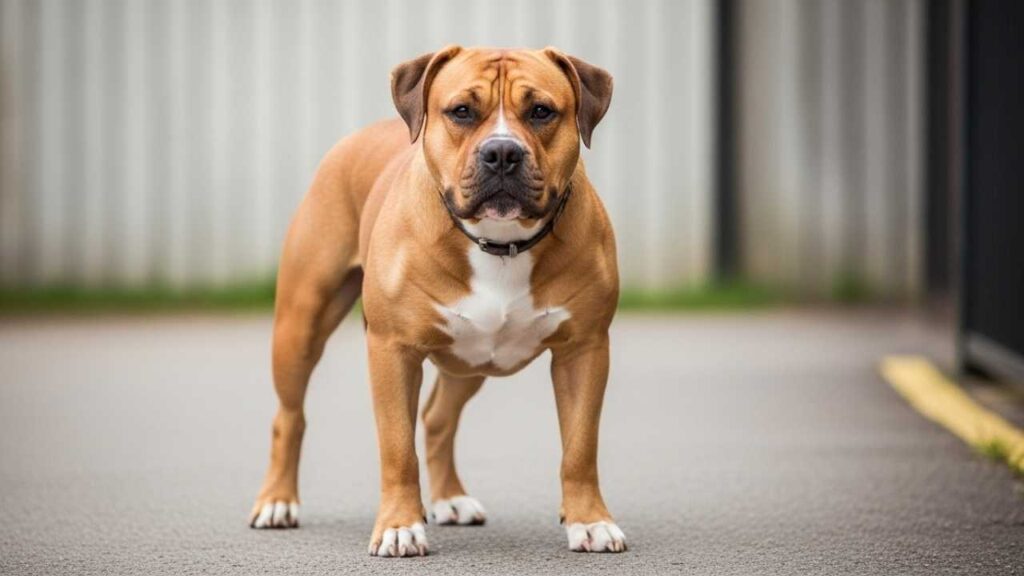
Why does the Mastiff take the top spot? Simple: when you think of strength and size in dogs, the Mastiff instantly comes to mind. These powerful dogs were bred for guarding, and they’ve perfected it.
Standing as tall as 30 inches at the shoulder and weighing up to 230 pounds, they’re practically a living, breathing wall.
Their most striking feature? The sheer size and the deep, broad chest make them look like they were carved from stone. When it comes to shedding, it’s manageable, but prepare yourself for an avalanche of drool. Yes, these giants love to slobber—constantly.
Health Concerns: Hip dysplasia, heart conditions, bloat, and elbow dysplasia.
Care Tips: Keep their joints in check with low-impact exercise, and feed them a high-quality diet.
With a hefty price tag for upkeep, this breed is best for experienced owners with plenty of space. If you want a gentle giant that’ll protect your family, the Mastiff might be your perfect match—if you can handle the drool!
2. Great Dane
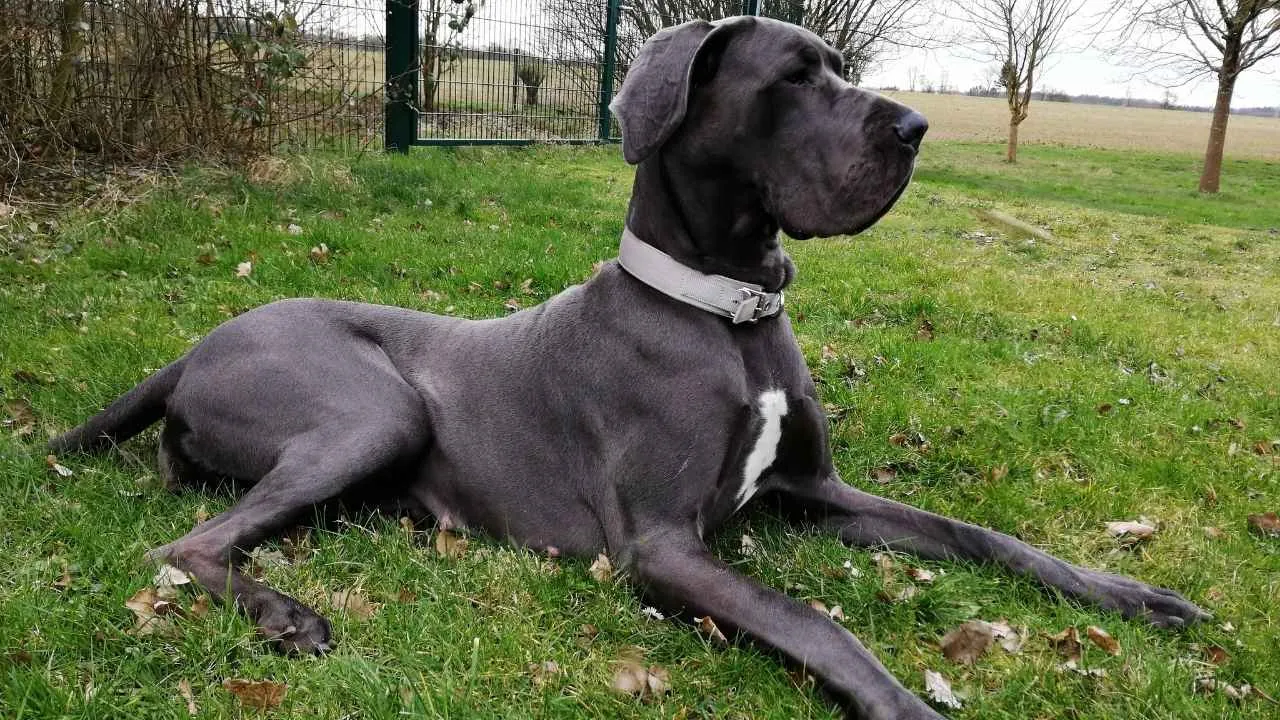
Why rank the Great Dane second? It’s simple: they’re tall—like, “I need to duck under doorways” tall. While Mastiffs may be bulkier, Great Danes dominate with their sheer height, earning them the nickname “Apollo of dogs.”
A typical Dane can stand up to 32 inches at the shoulder, and when they stand on their hind legs, they’re often taller than most humans.
Their most striking feature? Those long, elegant legs and imposing stature give them a royal look. As for shedding, it’s moderate, but their drooling is—surprise!—manageable. A towel nearby is enough to keep your space clean, though.
Health Concerns: Heart problems, bloat, hip dysplasia, and bone cancer.
Care Tips: Limit high-impact activities to avoid joint stress, feed them a healthy diet with supplements for bone health.
Great Danes can be pricey, with their food and vet bills being steep. They’re better for larger homes and owners who are ready to cater to a dog with a king-sized appetite. If you want a gentle giant who thinks they’re a lap dog, get ready to make room on the couch!
3. Tibetan Mastiff
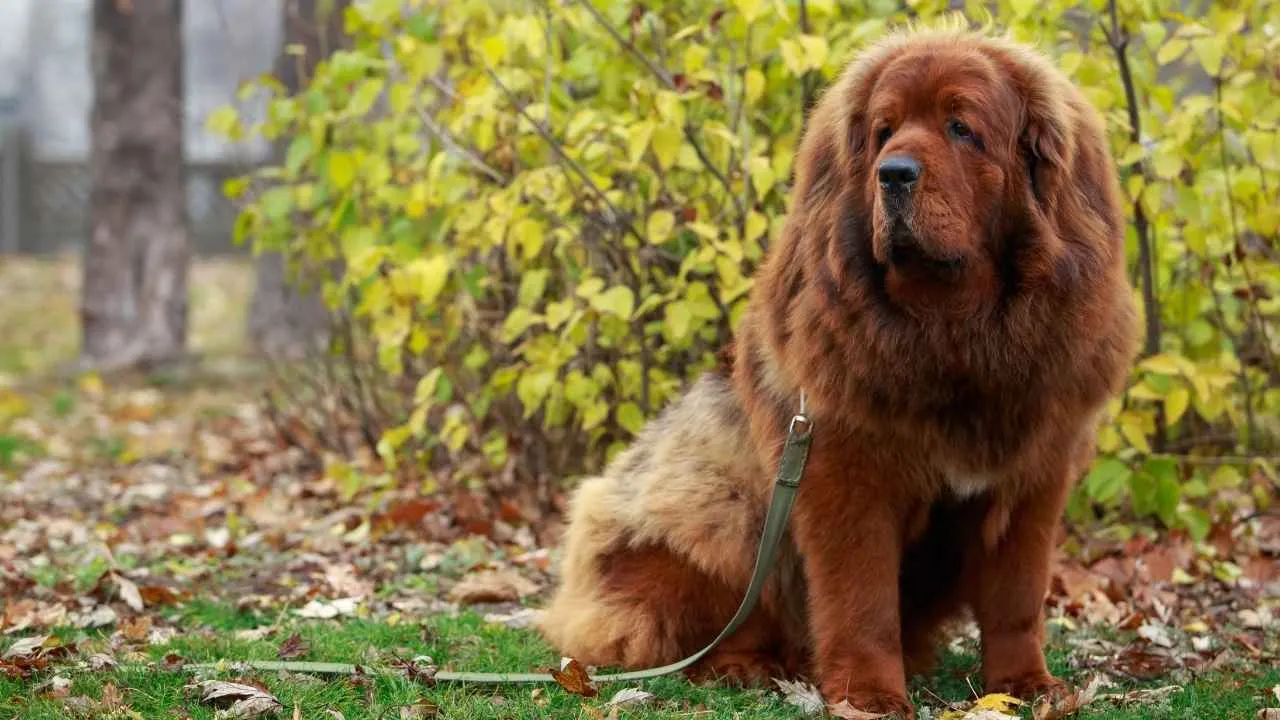
Why the Tibetan Mastiff snags the #3 spot? These dogs have an ancient and noble lineage, bred to protect livestock in the harsh Tibetan mountains. With their history, it’s no surprise they’re naturally strong and independent.
PDSA reveals that they combine strength with a royal presence, making them ideal protectors for anyone willing to understand their aloof demeanor.
What stands out? The thick, luxurious double coat, especially the impressive mane that makes them look like a lion. As for shedding, their dense coat needs regular grooming, but they won’t drool as much as you’d expect from a giant breed.
Health Concerns: Hip dysplasia, hypothyroidism, and bloat.
Care Tips: Regular grooming is essential, especially during shedding season. Keep their mind engaged with mental stimulation.
Owning a Tibetan Mastiff doesn’t come cheap—they’re a luxury breed that demands high-end care. Best suited for owners who can deal with a dog that has a mind of its own, they’re excellent for large properties and families who want a tough, loyal guard dog.
4. Irish Wolfhound
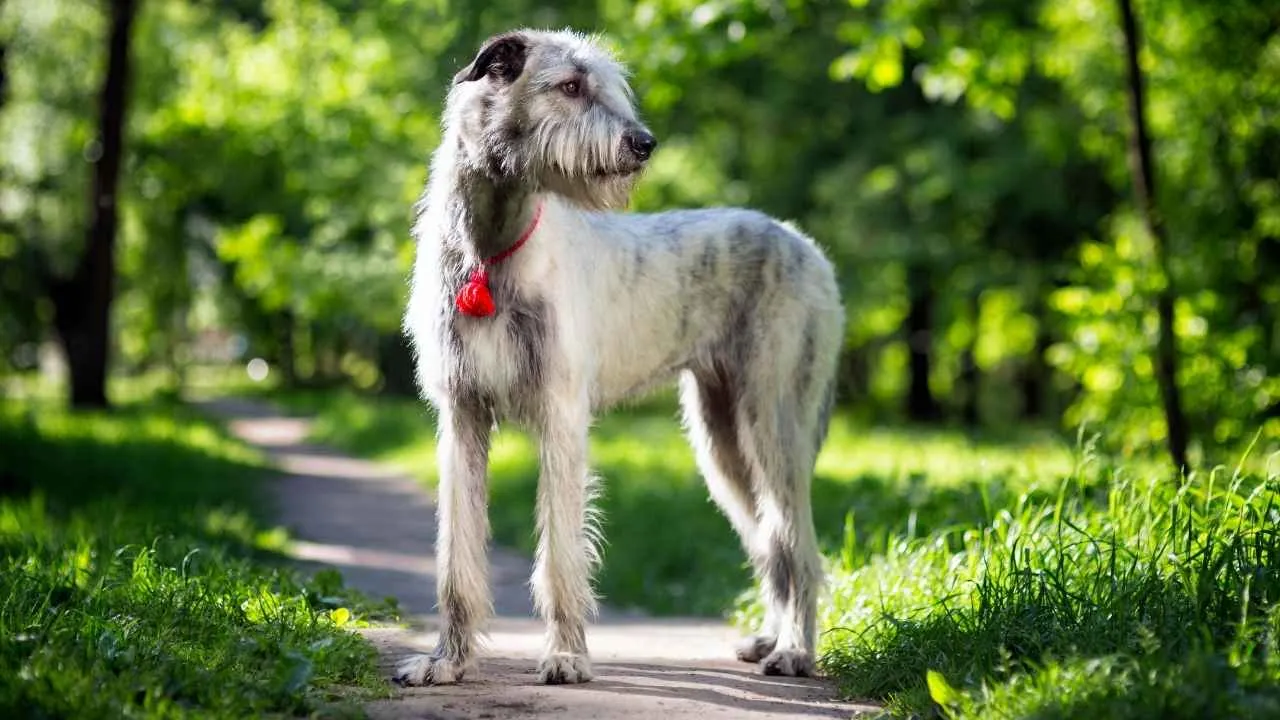
Why does the Irish Wolfhound claim the #4 spot? These dogs have been around for centuries, initially bred for hunting giant game like elk and wolves.
Though not as imposing as some others in terms of muscle, their towering size and speed make them incredibly powerful. Their endurance is unmatched for a breed of such large stature.
The most striking feature? Their long, shaggy coat makes them look as dignified as they are formidable. WebMD notes that the shedding isn’t a huge issue, but their grooming requirements do take a bit of time, and they do have a moderate amount of drool—especially when excited.
Health Concerns: Heart issues, bloat, and osteosarcoma.
Care Tips: They need consistent, moderate exercise and love lounging on soft surfaces to rest their large joints.
Irish Wolfhounds aren’t cheap to maintain due to their size and health issues, but they make wonderful, calm companions for families with space. They’re particularly suited to those who prefer an easy-going dog that doesn’t need constant high-energy exercise.
5. Anatolian Shepherd
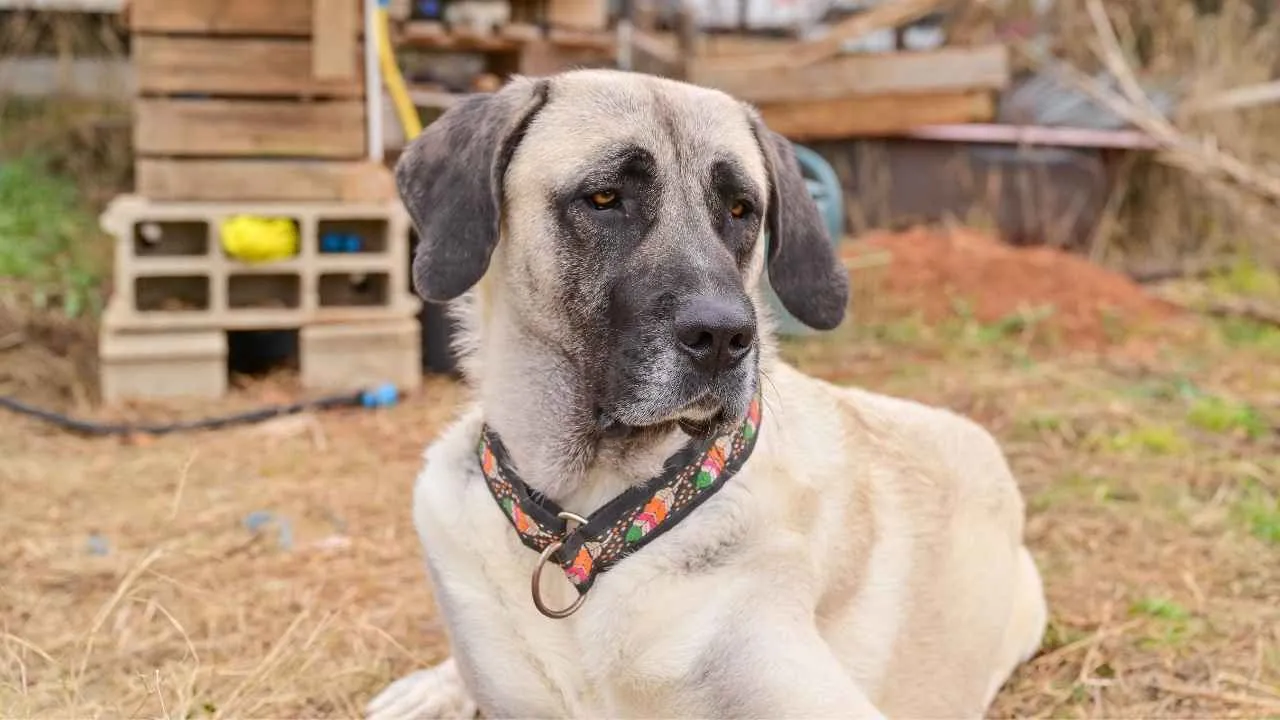
Why is the Anatolian Shepherd ranked fifth? While they may not be as “showy” as the others, their strength and protective nature make them a breed to reckon with.
These dogs are known for their incredible work ethic and ability to guard flocks from predators, making them natural-born protectors and defenders.
What makes them stand out? Their sharp, alert eyes and a powerful build. They shed year-round but are generally low on drooling, which means you won’t have to mop up much. Their coat, however, does require regular brushing to manage the shedding.
Health Concerns: Hip dysplasia, hypothyroidism, and bloat.
Care Tips: Consistent training is vital to ensure they’re socialized and obedient. A sturdy fence is also necessary for these independent dogs.
The Anatolian Shepherd is best for experienced dog owners with a rural setting. They’re not your typical family pet—they thrive in an environment where they have space to roam and protect. Be ready for a working dog that demands both physical and mental stimulation.
6. Cane Corso
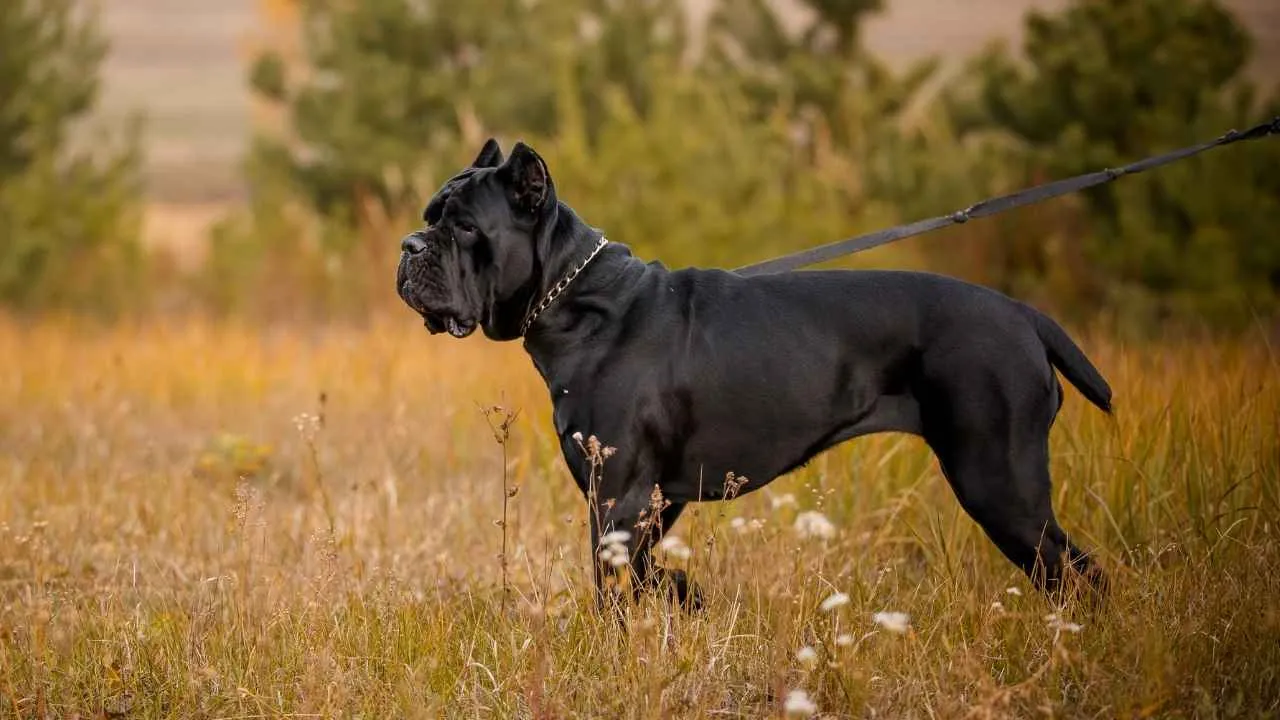
Why does the Cane Corso take the sixth spot? It’s all about their power and intelligence. Originally bred for guarding and working with livestock, the Corso is one of the most protective dogs out there.
With their muscular build and unwavering loyalty, they’re a perfect guard dog for those looking for both protection and companionship.
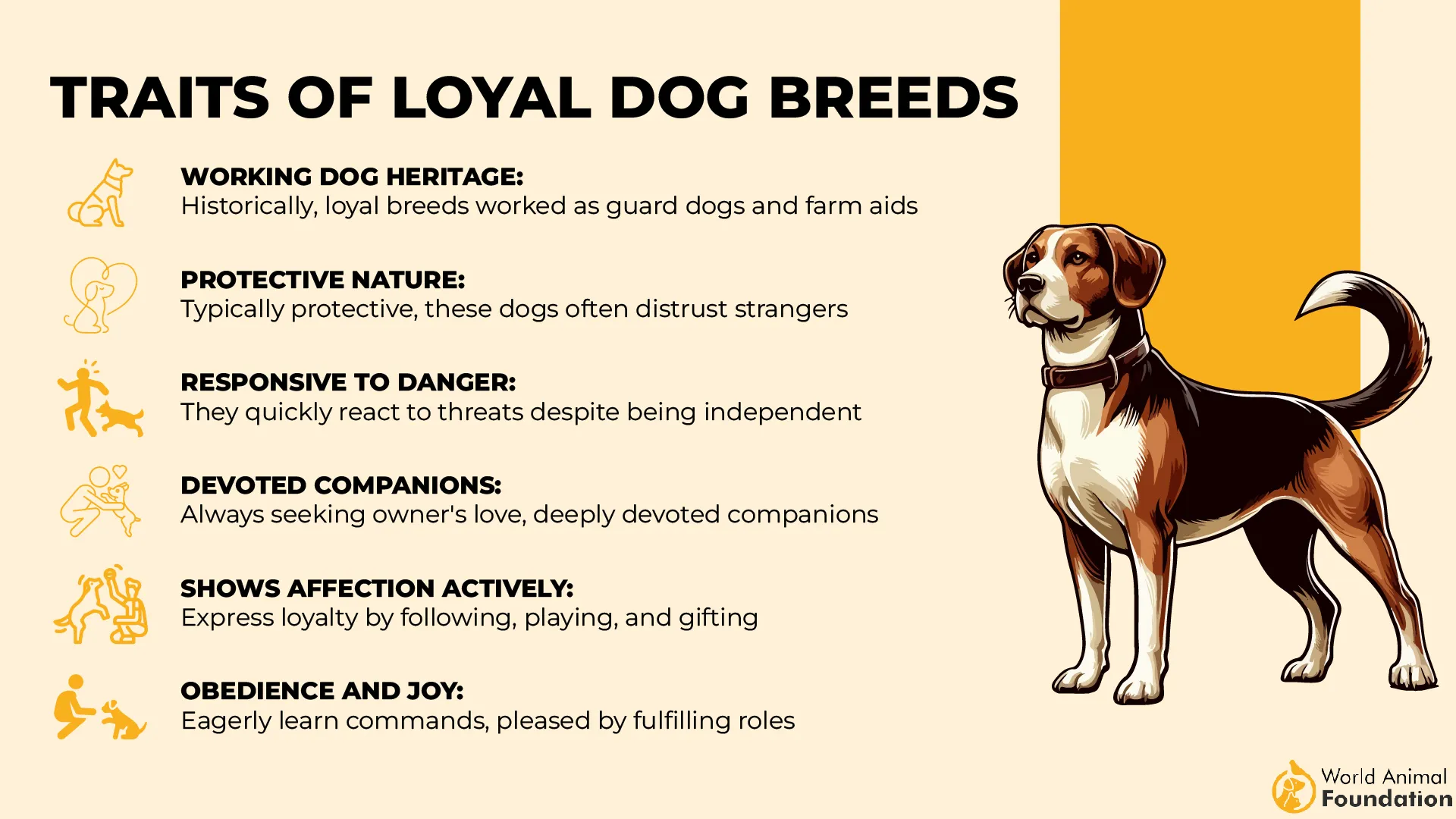
Their most striking feature is their athletic build and that broad, powerful head. With short hair, grooming is minimal, but they do tend to drool more than other breeds, especially when they’re excited or anticipating food.
Health Concerns: Hip dysplasia, bloat, heart problems.
Care Tips: They need early socialization and firm training. Keep an eye on their diet and avoid overfeeding.
Cane Corsos can be pricey, especially when factoring in their food and medical needs. Ideal for active, experienced owners, they do best in a home with plenty of room to roam. If you’re looking for a dog that will guard your family fiercely and loyally, this breed is for you.
7. Alaskan Malamute
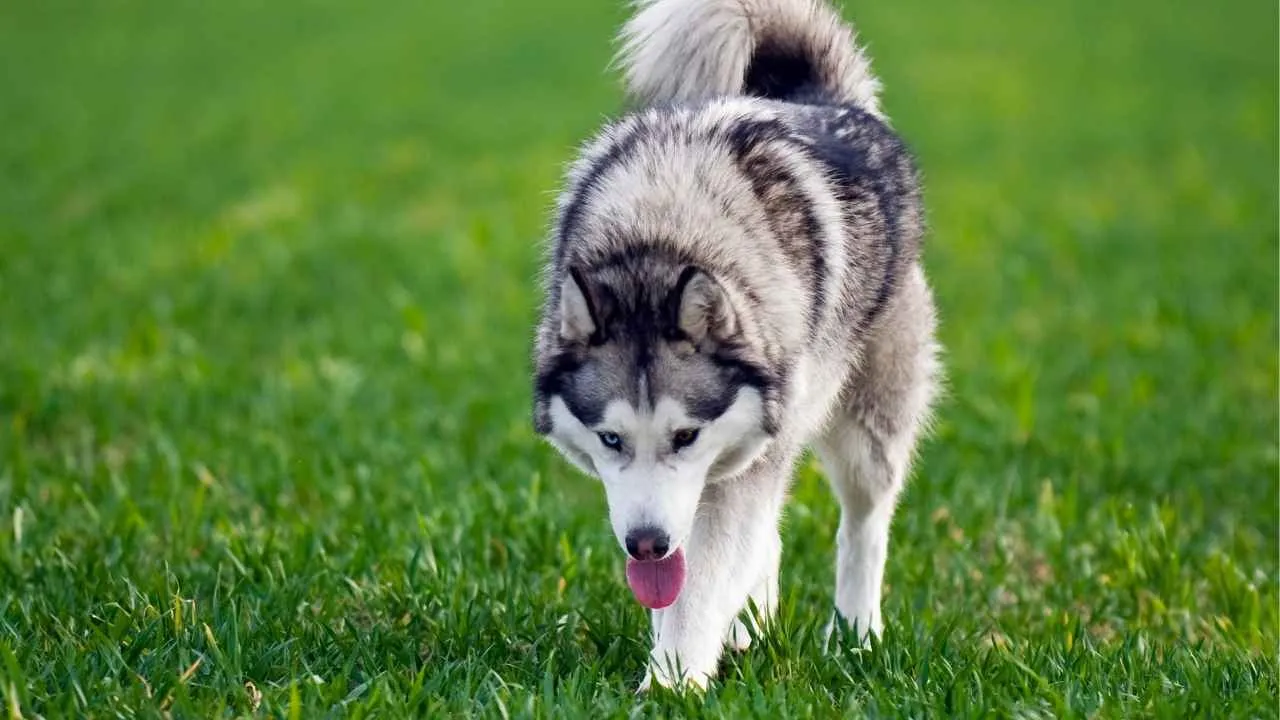
Why the Alaskan Malamute lands at #7? While not as massive as some of the other breeds on this list, these dogs are incredibly strong and built for endurance. Originally bred to haul heavy sleds across freezing terrains, their strength is unmatched when it comes to pulling.
What stands out? Their thick, double-layered coat and those intense, piercing eyes. They shed heavily, particularly during the warmer months, so expect to spend time brushing them. Thankfully, drool isn’t a big issue.
Health Concerns: Hip dysplasia, hypothyroidism, and eye problems.
Care Tips: Regular exercise and grooming are essential. They love to pull, so don’t be surprised if they try to “help” you with heavy chores.
AKC warns that Malamutes are not cheap to care for, especially when you factor in their high energy needs and grooming upkeep.
They’re best suited for active owners, ideally those with a snowy backyard. If you’re ready for a hardworking dog with a love for adventure, the Alaskan Malamute is your perfect companion!
FAQs
Are giant strong breeds naturally aggressive?
Not necessarily! While some giant breeds are protective, they are not inherently aggressive. Most giant dog breeds are calm, gentle giants who form strong bonds with their family members. Proper training and socialization play a huge role in shaping their temperament.
Do giant, strong dog breeds make good family pets?
Yes, many giant dog breeds make wonderful family pets! Breeds like the Saint Bernard and Bernese Mountain Dog are known for their friendly, affectionate nature. However, they do require space and regular exercise, so they’re best suited for families with room to roam.
Are strong giant dogs difficult to train?
It depends on the breed. While some giant dogs like the Mastiff or Great Dane may be a bit independent, they are still intelligent and trainable. Consistent, positive reinforcement is key to helping them become well-behaved family members.
Conclusion
In today’s article, we’ve covered some of the strongest giant dog breeds, but there are many more out there! Breeds like the Bernese Mountain Dog, Saint Bernard, and Great Pyrenees are also known for their strength and loyal companionship, perfect for farms and family members alike.
While these large dogs are great for protection, others like the Leonberger and Neapolitan Mastiff can be just as powerful and loving. Many of these breeds are believed to have bright personalities, making them a fun addition to your home.
If you’re considering a giant dog, make sure you’re ready for the responsibility! Whether for search and rescue or just being a watchful protector, these breeds fit into various lifestyles. Continue exploring these breeds and find the one that’s perfect for your family today!


